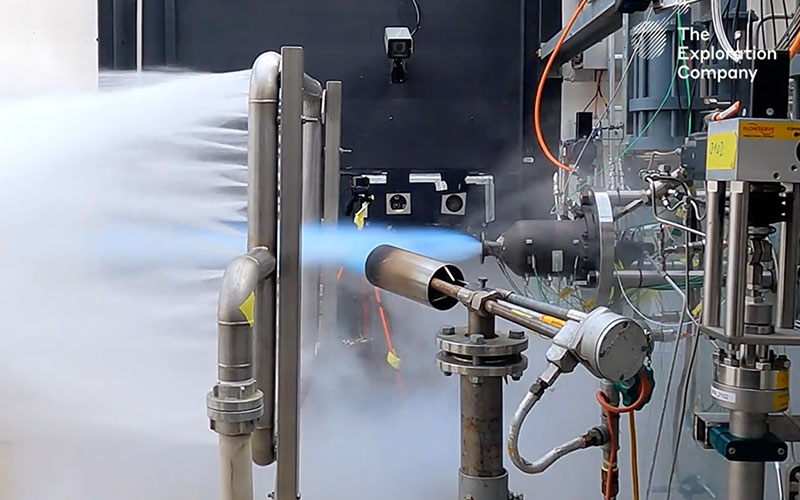
The Exploration Company has completed a six-week test campaign of a pre-burner, marking a key step in the development of its high-thrust Typhoon rocket engine. The test campaign was, however, not without its challenges.
With co-financing from the French space agency CNES, The Exploration Company kicked off the development of its Typhoon rocket engine in early 2024. According to its website, the company’s full-flow staged combustion cycle reusable rocket engine is designed to produce 200 tonnes of thrust. However, a recent LinkedIn update suggests the company has revised its projections to 250 tonnes.
On 13 February, The Exploration Company announced the successful completion of the first test campaign for the engine’s oxygen-rich pre-burner. According to the update, a total of 16 tests were conducted, including cold flow trials, hybrid ignitions, and full-firing attempts, with the company achieving approximately 16 seconds of stable combustion.
While the company highlighted the campaign’s successes, it also acknowledged that there were challenges.
“Of course, no test campaign is complete without challenges,” explained a statement published on LinkedIn. “We encountered hardware failures and are now deep into data analysis to refine our approach before moving to the next phase.”
At this point, the Typhoon rocket engine has no clear application. The company is currently focused on developing its modular Nyx spacecraft, which will initially be used to ferry cargo to and from low Earth orbit. While the development of a rocket would remove the need for third-party launch companies to carry the spacecraft to orbit, no such development programme has yet been announced. The engine has also been offered by the company as a propulsion solution for other launch systems, but again, the company has not given any indication that this is what it intends to do.




